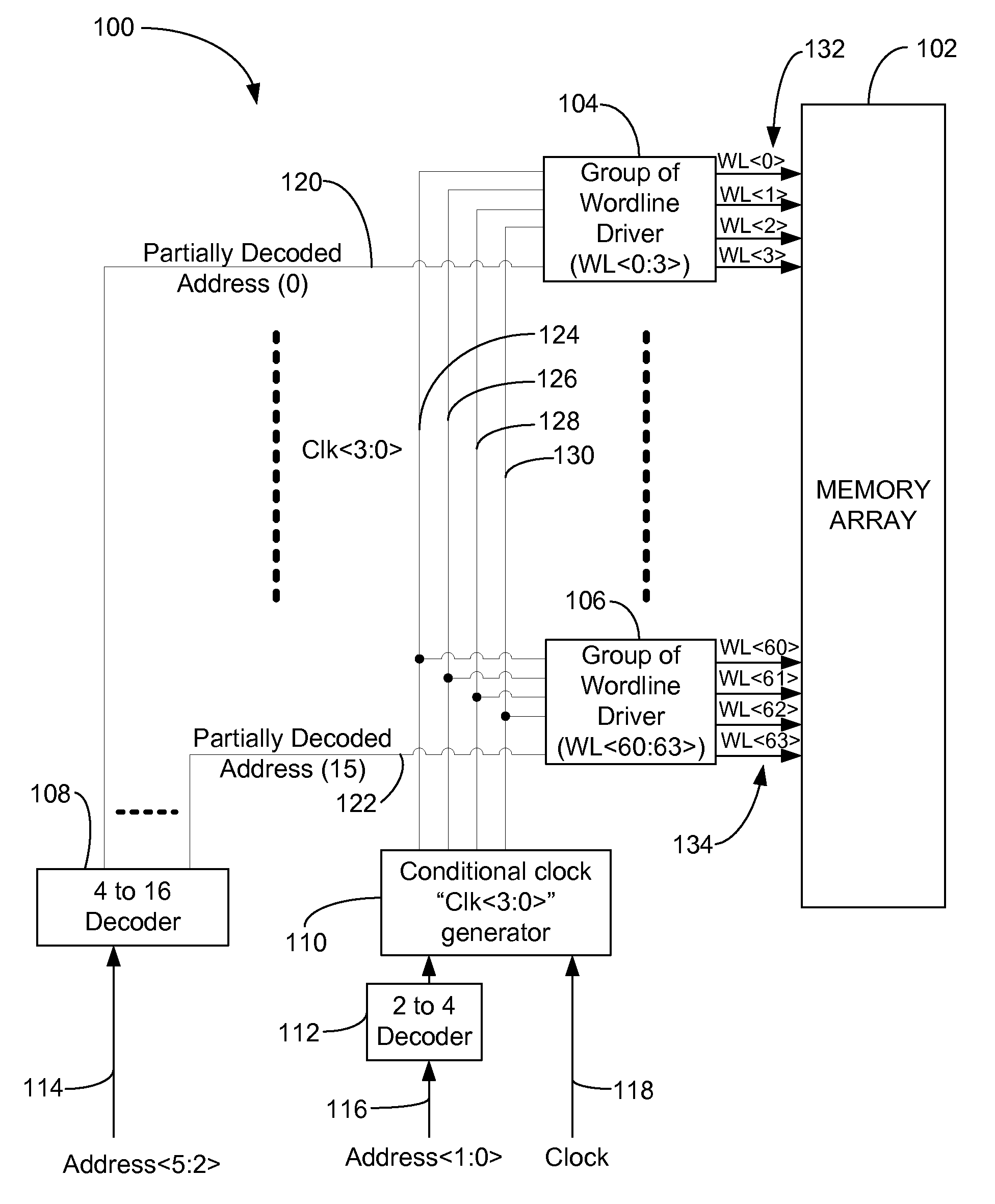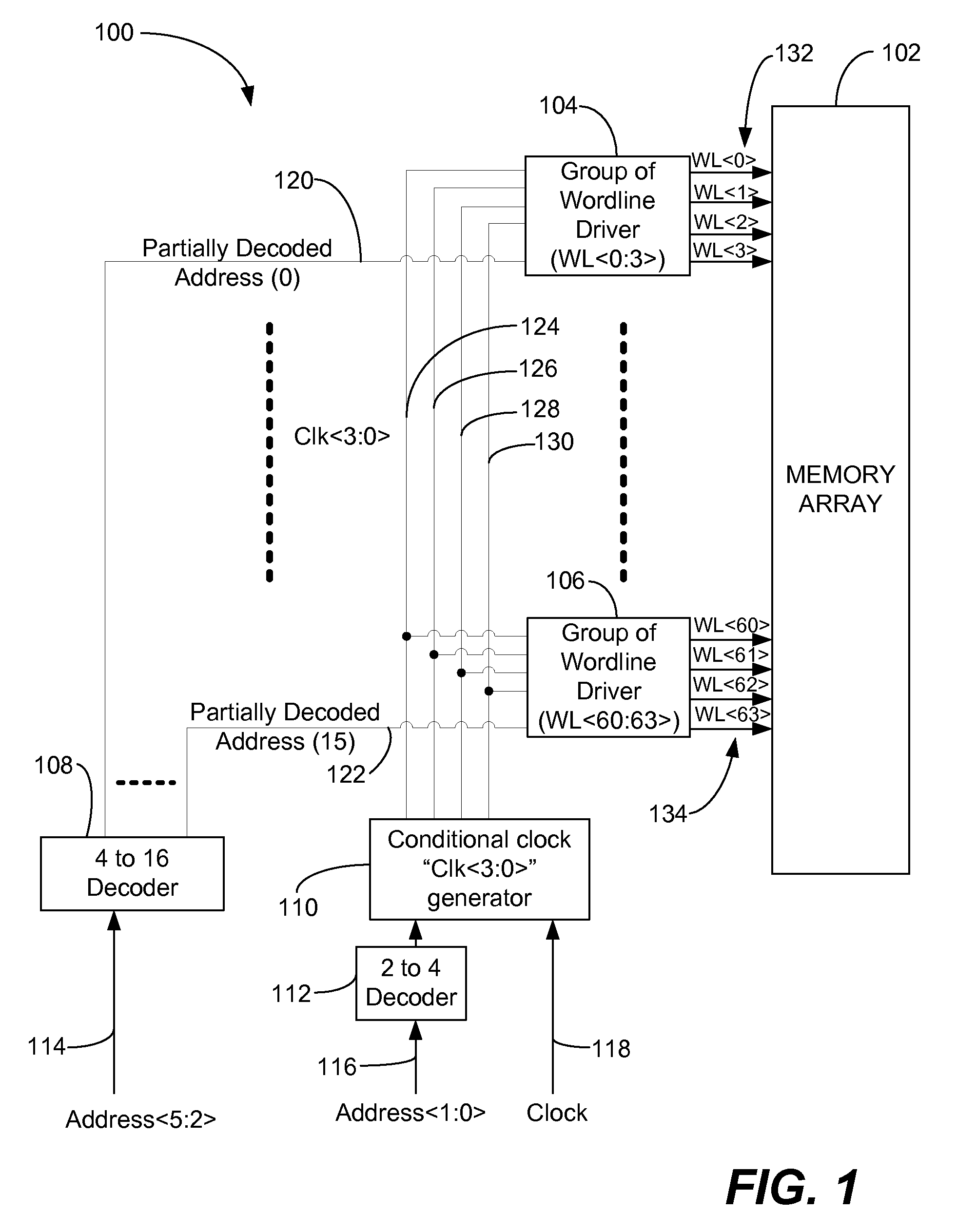Dynamic word line drivers and decoders for memory arrays
a dynamic word line and memory array technology, applied in static storage, information storage, digital storage, etc., can solve the problems of increasing complexity and power consumption, placing a large electrical memory systems with a traditional dynamic/static circuit structure may place a heavy load on the clock, so as to reduce the timing delay from a clock to a particular wordline, the effect of increasing the capacitive noise-coupling immunity
- Summary
- Abstract
- Description
- Claims
- Application Information
AI Technical Summary
Benefits of technology
Problems solved by technology
Method used
Image
Examples
Embodiment Construction
[0018]FIG. 1 is a block diagram of a particular illustrative embodiment of a wordline driver system 100 including a set of wordline drivers, such as the groups of wordline drivers 104 and 106 that are associated with a memory array 102. The system 100 may include multiple additional sets of wordline drivers (not shown). Each set of wordline drivers may control up to sixty-four wordlines (numbered zero to sixty-three) using sixty-four corresponding wordline drivers. The set of sixty-four wordlines and corresponding wordline drivers may be divided into groups of wordline drivers, such as the groups of wordline drivers 104 and 106. In a particular embodiment, the group of wordline drivers 104 may drive wordlines, such as the wordlines 132 from zero to three (WL, WL, WL, and WL), and the group of wordline drivers 106 may control wordlines, such as the wordlines 134 from sixty to sixty-three (WL, WL, WL, and WL). In this instance, each of the groups of wordline drivers 104 and 106 contro...
PUM
 Login to View More
Login to View More Abstract
Description
Claims
Application Information
 Login to View More
Login to View More - R&D
- Intellectual Property
- Life Sciences
- Materials
- Tech Scout
- Unparalleled Data Quality
- Higher Quality Content
- 60% Fewer Hallucinations
Browse by: Latest US Patents, China's latest patents, Technical Efficacy Thesaurus, Application Domain, Technology Topic, Popular Technical Reports.
© 2025 PatSnap. All rights reserved.Legal|Privacy policy|Modern Slavery Act Transparency Statement|Sitemap|About US| Contact US: help@patsnap.com



